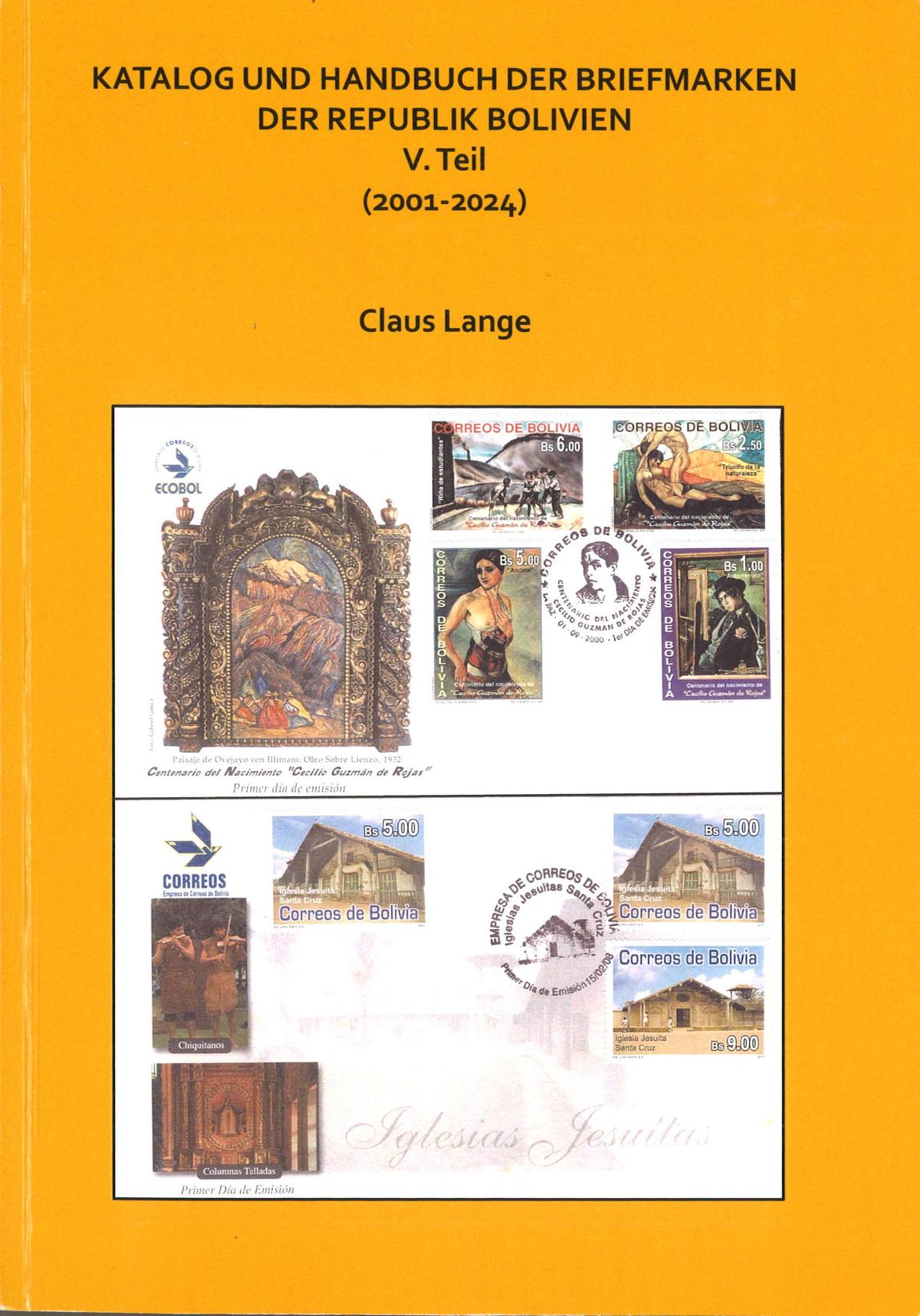Between 2001 and 2017, the Bolivian postal administration ECOBOL issued around 550 stamps, a truly impressive production of 33 stamps per year. The fact that this volume ultimately manages with just under 240 pages of content is mainly due to the fact that ECOBOL’s stamp issues came to an abrupt end in 2018 due to its liquidation. The newly founded postal company Agencia Boliviana de Correos (AgBC) issued only four new stamps until 2024, apart from the numerous stamps overprinted with a red hand stamp in the period 2018–2021, which are reported on in detail in this volume.
The intention of not only providing philatelic information on the issues and backgrounds of Bolivian stamps, but also of integrating them into a socio-cultural context, also applies to the present fifth volume.
What is worth mentioning in this catalogue and handbook of stamps, part V, in addition to the classic listing and description of the regular stamp issues? What are the interesting and entertaining stories, as in the first four volumes, that make studying Bolivia’s postal history so interesting and varied?
A postage stamp series issued in 2001 called ‘Philately’ should have included ten stamps that had already been presented to the public in a ‘boletin’. Was the reason for the non-issue of most of these stamps the selection of motifs, which showed surprisingly childlike depictions? One got the impression that these were aimed more at toddlers than at future collectors. Then, of course, there is the account of the forgery of stamps from the 1990s by postal officials in Santa Cruz, which was already announced in volume IV. Here, at the Viru Viru airport in Santa Cruz, mailbags were discovered that could not be sent due to the terrorist attacks on 11 September 2001 in New York, and in which postal items with counterfeit stamps were then found. Subsequent investigations revealed that the regional director of Ecobol in Santa Cruz, in collusion with relatives, had been smuggling the stamps into postal traffic and affixing counterfeit stamps to numerous items of foreign mail. Over the years, the Bolivian stamps also increasingly propagated the political goals of Evo Morales’ ruling party.
His image appeared on numerous stamps; the friendship with Venezuela and Cuba, as well as the anniversary of the death of Ché Guevara, led to numerous stamp issues, government supporters stopped stamps for nationalist reasons, and neighbouring Chile was repeatedly the target of politically connoted emissions.
All stamps issued from 2001–2024 are catalogued in the present volume. The systematics of the present text are furthermore based on a uniform numbering of the stamps. First day covers (FDC) and cards (ER), postal stationery envelopes (GU) are also catalogued numerically. For ease of comparison of the individual issues, the corresponding Michel and Stanley Gibbons numbering and the CEFILCO number of the respective issue are added.
The author, Claus Lange, born in Stuttgart and living in Berlin, is chairman of the Collectors’ Association Latin America (Spanish) at the German Philatelic Association (BDPh e.V.) and a member of the Associaction Internationale de Journalistes Philatéliques (AIJP).
Short details: 246 pages in colour, paperback, Berlin 2024, SR: selling price 25 euros. Available from the author: Claus Lange, Schloßstraße 104, 12163 Berlin, Tel.: 01578 7177191 – E-Mail: ccocha@yahoo.de
Translated with DeepL (www.deepl.com)


